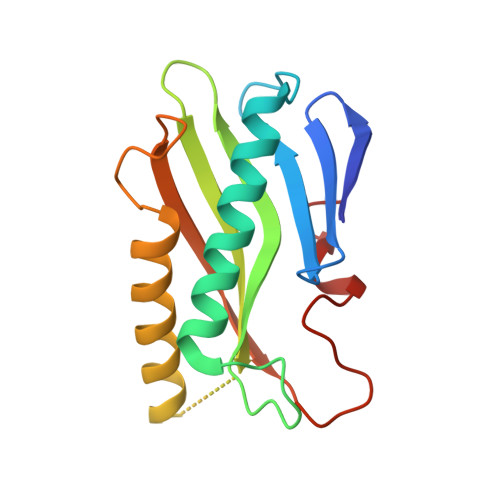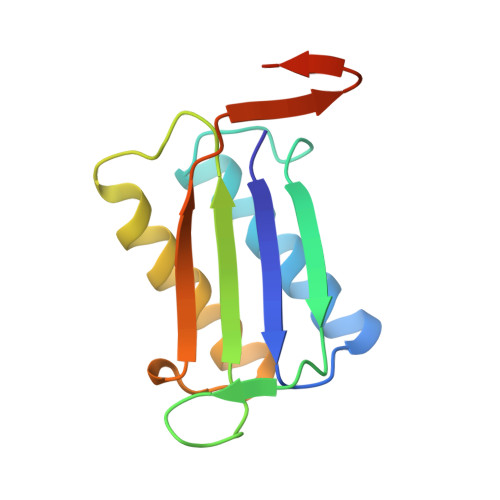Accurate design of co-assembling multi-component protein nanomaterials.
King, N.P., Bale, J.B., Sheffler, W., McNamara, D.E., Gonen, S., Gonen, T., Yeates, T.O., Baker, D.(2014) Nature 510: 103-108
- PubMed: 24870237
- DOI: https://doi.org/10.1038/nature13404
- Primary Citation of Related Structures:
4NWN, 4NWO, 4NWP, 4NWQ, 4NWR - PubMed Abstract:
The self-assembly of proteins into highly ordered nanoscale architectures is a hallmark of biological systems. The sophisticated functions of these molecular machines have inspired the development of methods to engineer self-assembling protein nanostructures; however, the design of multi-component protein nanomaterials with high accuracy remains an outstanding challenge. Here we report a computational method for designing protein nanomaterials in which multiple copies of two distinct subunits co-assemble into a specific architecture. We use the method to design five 24-subunit cage-like protein nanomaterials in two distinct symmetric architectures and experimentally demonstrate that their structures are in close agreement with the computational design models. The accuracy of the method and the number and variety of two-component materials that it makes accessible suggest a route to the construction of functional protein nanomaterials tailored to specific applications.
Organizational Affiliation:
1] Department of Biochemistry, University of Washington, Seattle, Washington 98195, USA [2] Institute for Protein Design, University of Washington, Seattle, Washington 98195, USA [3].















